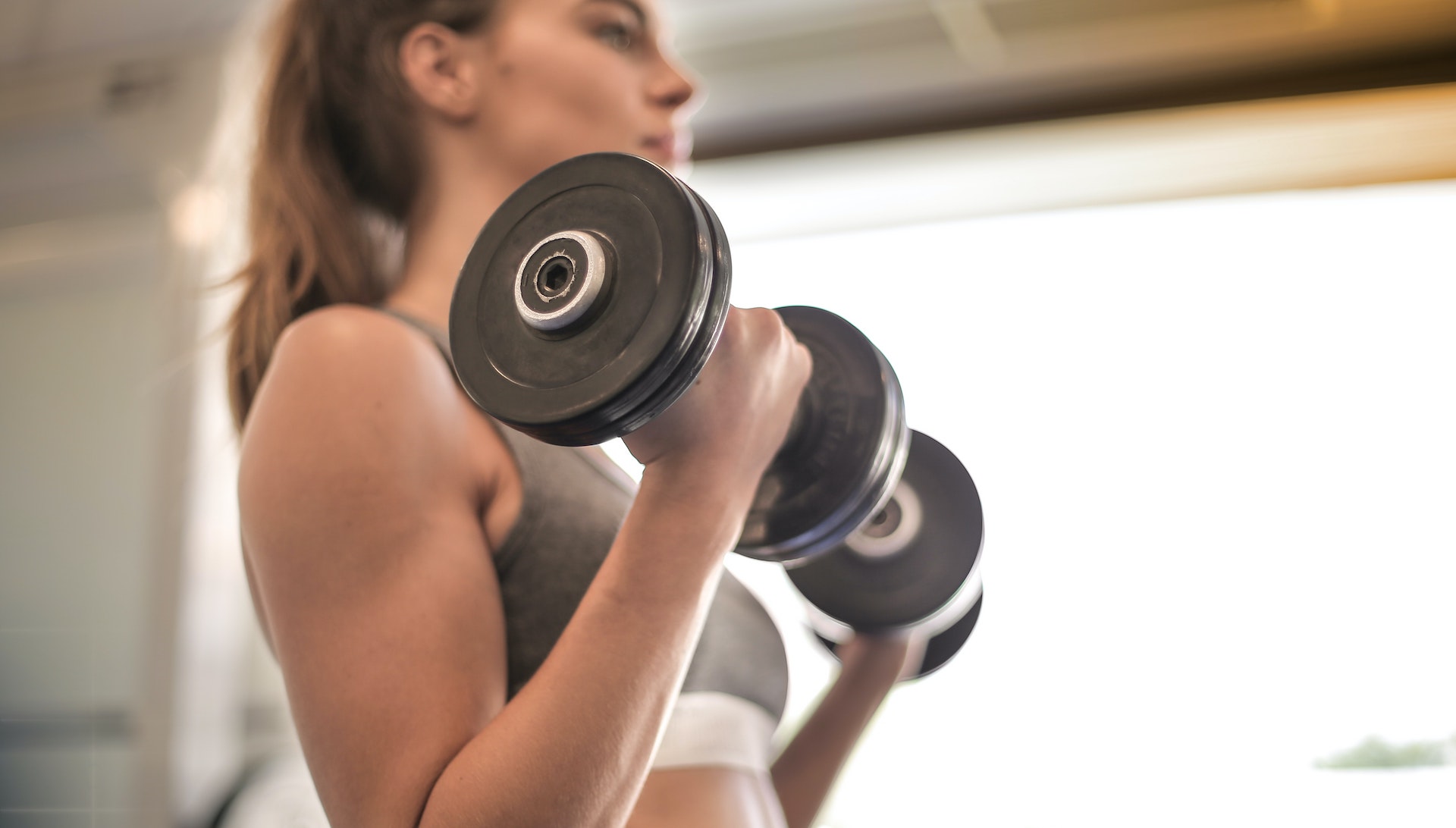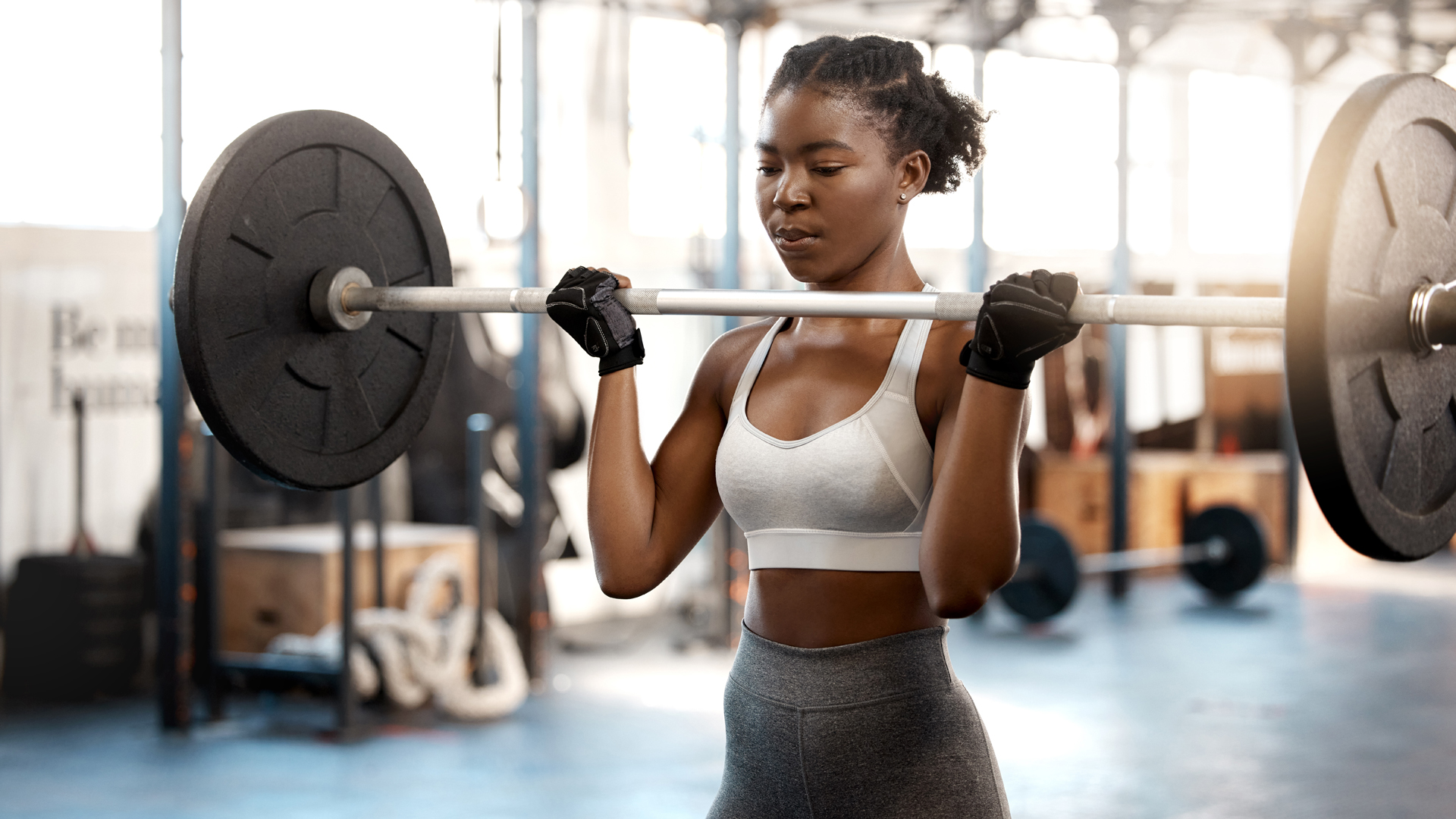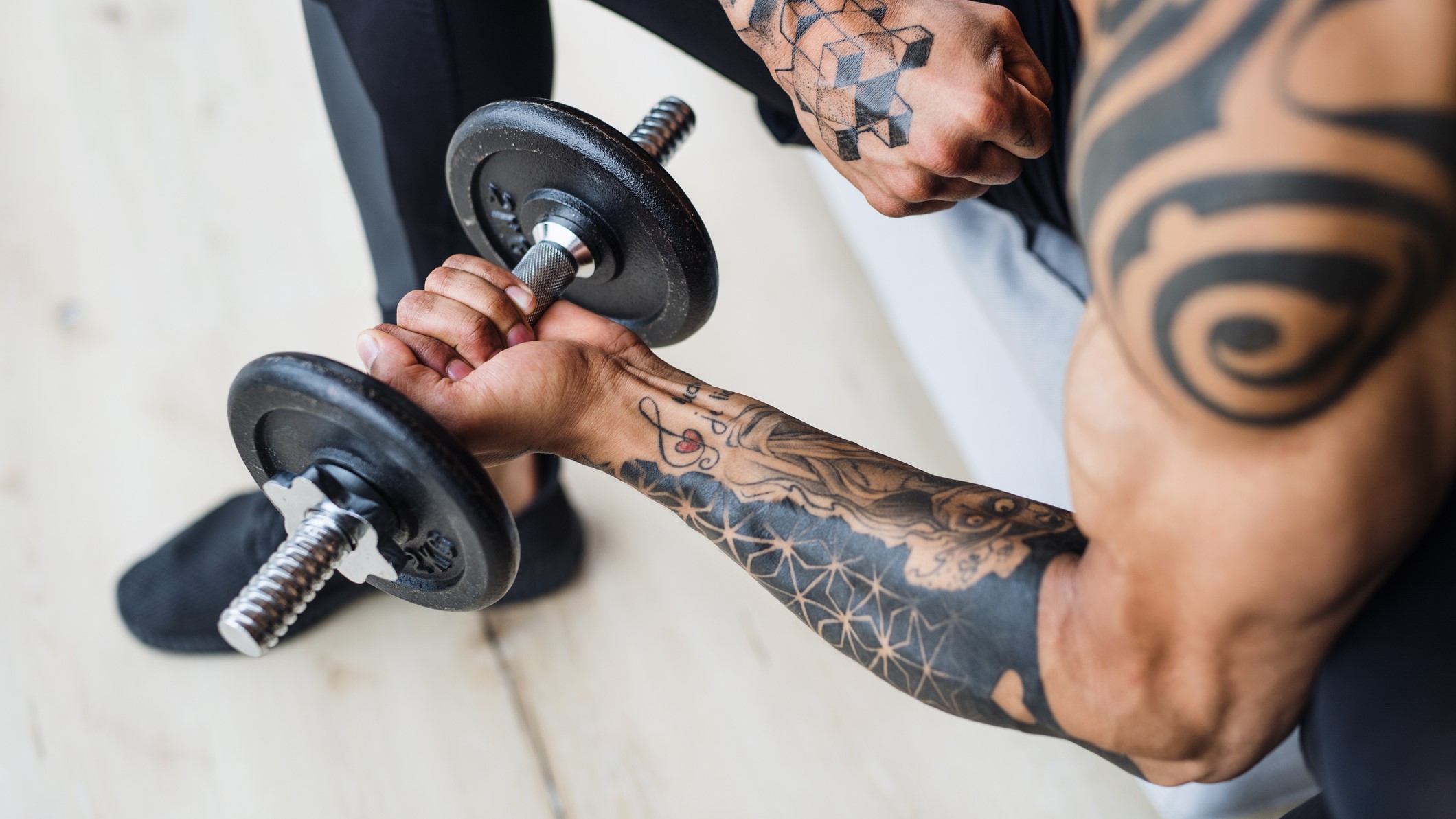
When I’m tasked with a new fitness challenge, such as ‘50 squats a day’, ‘100 glute bridges a day’ or ‘50 bird dogs a day’, I’m usually happy to see it through to the end in the hope I’ll gain firmer legs, a bootylicious butt, and a killer core along the way.
But of all the muscles I’d like to strengthen and grow on my body, my biceps are bottom of the list. They’re just not a priority to me, no doubt, because I don’t possess the desire to have guns big enough to rival Chris Hemsworth - even if it feels like the rest of the world does!
When I do recruit my biceps in a workout, it’s usually as part of a full-body compound exercise, such as a dumbbell squat curl and press, because I feel this is a more efficient, effective, and challenging way to train. Indeed, thinking back, I realised that I hadn’t just stood still and slowly performed reps and sets of biceps curls since my teens and early 20s.
And then it hit me. The reason why I used to pump out bicep curl after bicep curl in my bedroom using dumbbells I nicked off my dad – and got into fitness in the first place - was because I wanted arms like Linda Hamilton in Terminator 2 (who could forget that chin up scene?!?). And so, armed with my renewed teenage fitspiration – and the realisation that my arms still looked nothing like Hamilton’s – I grabbed my dumbbells and got to work. Here’s what happened when I did 100 bicep curls a day for a month.
What are the benefits of doing bicep curls?
Bicep curls, or arm curls, are a single-joint movement that work the biceps in isolation to help you build strength and increase the size of the muscle at the front of your upper arm. The bicep muscle, aka the biceps brachii, runs between the shoulder and the elbow, and has two heads (the short head and the long head) that work together as one single muscle, hence the ‘bi’ in the name.
Because bicep curls rely on elbow flexion and forearm supination to allow the palm to rotate up or forward, they also activate some of the muscles of the lower arm – the brachialis and brachioradialis – helping you to pick up heavy loads, perform daily tasks, play sports like tennis and baseball, boost athletic performance, and perform other upper body exercises that involve flexing and bending the elbow, such as overhead presses and lat pulldowns.
Bicep curls are a simple exercise that can be done standing or sitting down, anytime, anywhere, as long as you have a form of resistance to hand, such as the best dumbbells, the best barbell, the best kettlebells, the best resistance bands, or a cable machine if you’re training in the gym.
When performed correctly, arm curls will help you build muscle and strength in the biceps to help you to look and feel stronger, and achieve bigger, leaner arms with great definition you’ll want to flex and show off at any opportunity.
How do I do a bicep curl?
Holding a dumbbell in each hand, stand with your feet shoulder-width apart with your knees slightly bent. Keeping your core engaged and your arms by your sides with palms facing forwards, make sure your chest is high, and shoulders are pulled back. This is the starting position.
Keeping your upper arms stable and elbows tucked close into the sides of your body, exhale while bending at the elbow to lift the weights towards your shoulders. Pause for a second at the top, then inhale as you lower the weights back down to the start position in a slow and controlled fashion.
Continue performing biceps curls until you complete your desired number of reps and sets (try three sets of 12-15 reps), aiming to hit total failure in the muscle by the end of the three sets.
How to avoid biceps curl mistakes
- Avoid weights that are too heavy: using a weight that is too heavy can result in the body recruiting other muscles, such as the core and back, to help you perform the bicep curl, thereby taking the focus away from your biceps.
- Avoid weights that are too light: you need to select a weight that is challenging enough to leave your muscles feeling totally fatigued by the end of your reps and sets; otherwise, you won’t build strength or achieve the gains you’re after.
- Work with a full range of motion: make sure you lift your weight all the way to your shoulders at the top of the movement and all the way back down by fully straightening the elbows. This will work the bicep muscle in its entirety.
- Keep things under control: your shoulders and elbows should remain stable throughout. Avoid swinging the dumbbells upwards, quickly lowering the weights down, or using any momentum. Slow down your reps to properly isolate your biceps.
- Think about your form: you should maintain a tall, upright position with a tight core and relaxed shoulders always. If your shoulders start to hunch forwards or your hips start to hinge over, you’re probably lifting a weight that is too heavy for you.

I did 100 bicep curls a day for a month, and this is what happened
Week one
After measuring my biceps while resting and flexing, the first few days of this challenge were all about finding the right weight. Doing 100 biceps curls a day is way more than my usual three sets of 15 reps, and that meant I had to find a weight that allowed me to perform an extra 55 reps, but still left my biceps feeling exhausted by the end of the 100 reps.
If I’m honest, I went pretty light on the first day, reaching for two 10lb dumbbells to start with. And I did this because I was scared. If you’ve ever overtrained your biceps before, you will know the terrible pain it can cause, and that feeling of waking up like a T-Rex for days afterwards - unable to straighten your arms - isn’t a great one.
The first 50 reps were fine, but after my third set of 25 reps, my arms were really feeling like jelly. After resting for a long time, I gritted my teeth and struggled through the last set of reps one by one.
My arms were really feeling it the next day, but the pain wasn’t horrendous, so I upped the weight up to 12 lbs. Big mistake! I woke up on the third day in agony and had to skip washing my hair.
Knowing I still had another 27 days of this torture ahead, I decided to take a slow, steady approach and dropped back down to 10 lbs for the rest of the week. By the end of it, my arms felt like spaghetti and pretty uncontrollable, like they didn’t belong to my body.
Week two
Midway through the second week, I felt able to return to the 12lb dumbbells, but that doesn’t mean I was happy about it. Even typing at my laptop was agonising, and I had to take regular breaks to try and straighten out my arms.
If you’re not hell-bent on growing your biceps, this really isn’t the challenge for you. I regularly found I’d be okay up to the 80th rep, but the last 20 reps would be a super painful process. Only picturing Linda Hamilton’s arms got me through.

Week three
Aside from the pain of doing 100 bicep curls a day, I was also really bored. I had previously tried doing single-arm bicep curls in the week before to break things up, and while it felt a little easier, it meant doing 200 hundred reps in total, which took FOREVER.
Therefore, I decided to change things up by introducing Hammer Curls, Zottman Curls, and Wide Curls to the mix in addition to my regular Biceps Curls, doing 25 reps of each.
Still working with my 12lb dumbbells, this opened me up to a whole new world of pain over the next week because they all targeted different areas of my biceps from the inside to the outside. That said, taking this approach definitely lifted some of the boredom I was feeling and forced me to concentrate on my form at all times.
Week four
Heading into the final week, my biceps felt like they were going to burst. However, I was definitely seeing some nice definition in the mirror, and that gave me the impetus I needed to finish the challenge.
Keeping with my week-three approach doing 25 reps of bicep curls, hammer curls, Zottman curls, and wide curls, I decided to go for broke and upped my dumbbells to 15 lbs each.
In all honestly, I hated this final week. My arms and hands were incredibly sore, and my biceps felt especially exhausted and depleted - like they had nothing else to give. But I got through it, one bicep curl at a time until it was finally over.
By the end of it, I have to admit I did feel pretty pumped, though. My biceps were noticeably firmer and bigger, and the tape measure revealed I’d gained about one and a half centimetres on each arm. The only issue is that, right now, I never want to see another dumbbell again…







